Bvlgari: Global After-Sales App
Casting magic to luxury brand Bulgari’s after-sales services with retail tech. From concept to design, we devised an after-sales application for Bulgari which streamlines the entire lifecycle of processing requests for watches that need servicing. The application does it all, starting from when the watch is received in-store, up until it is repaired and back in the customer’s hands. Now virtually anyone at Bulgari can confidently serve clients without the stress of upsetting customers or other hassles previously associated with after-sales.
Re-thinking After-Sales
For luxury jewelry and watchmakers like Bulgari, providing top-quality after-sales services is extremely important, since their products’ durability (and hence, their customer’s satisfaction) largely depends on regular maintenance by professionals. Yet, this can be challenging because clients have high expectations to be served well at luxury brands, which from their view includes the speed of identifying and solving the issue at hand. In reality, however, very limited answers can be provided on-the-spot in boutiques or other point-of-sales due to the complex nature of watches and fine jewelry. It usually requires closer inspection by technicians located in remote service centers for a full diagnosis.
With the context above, Bulgari approached us to help its store staff serve customers better by taking a deep dive into unveiling the multi-faceted issues pervading its after-sales and ultimately come up with a concept and design for an application that will simplify and elevate the experience for both clients and boutique staff. Last but not least, as being able to roll out the solution globally was a condition for success from Bulgari, we needed to consider the tool’s usage in various markets right from the bat.
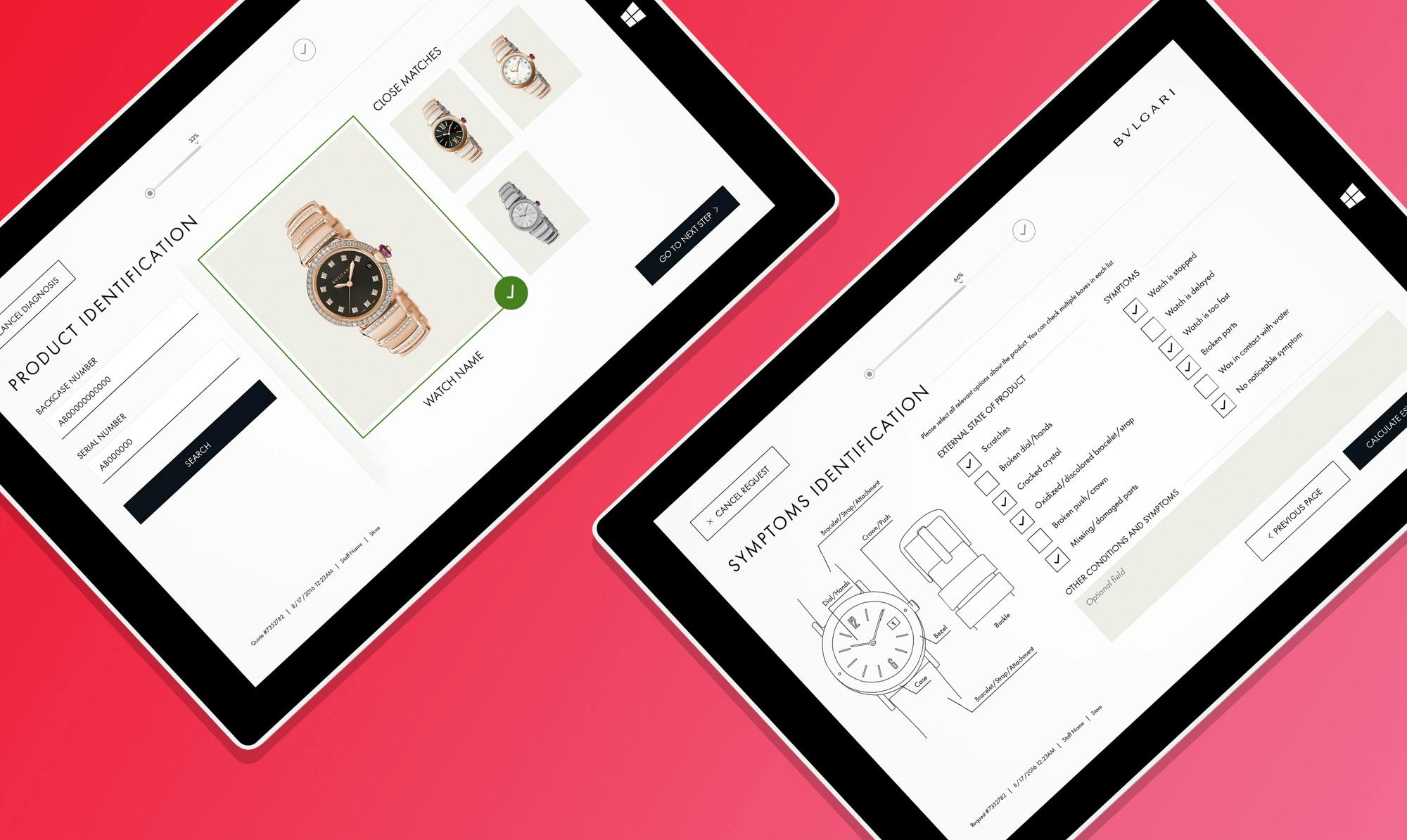
We launched the project with an in-depth research phase in two markets: Japan and China. Although both in Asia, Japan and China’s approach to customer service and the existing after-sales situation are at complete odds. We projected that an after-sales solution that works well in both countries will cover most pain points faced in Bulgari’s global markets.
Uncovering Bulgari’s After-Sales
Our first goal was to learn about the existing after-sales process for watches, explained by key members of the service center. Bulgari provides two types of watch maintenance: basic service and complete service. Watches that have simple issues require the basic service, whereas those that need overhauling require the complete service. Upon seeing the watches’ condition, a price list is used to identify the service cost since it fluctuates depending on the watch model. Store staff will give an initial estimate to customers based on what they see, but the final service and quotation are determined after inspection by technicians at the service center.
The system in place sounds simple in theory, but there were many problems with it, namely the following:
- Identifying watch models is difficult due to multiple changes in the way serial numbers have been cataloged over the years or when illegible due to long-term wear
- Attributing the malfunction to a specific issue and linking it to the corresponding service is very difficult especially for store staff with limited experience
- Paper-based forms are prone to human error (e.g. miswriting the serial number)
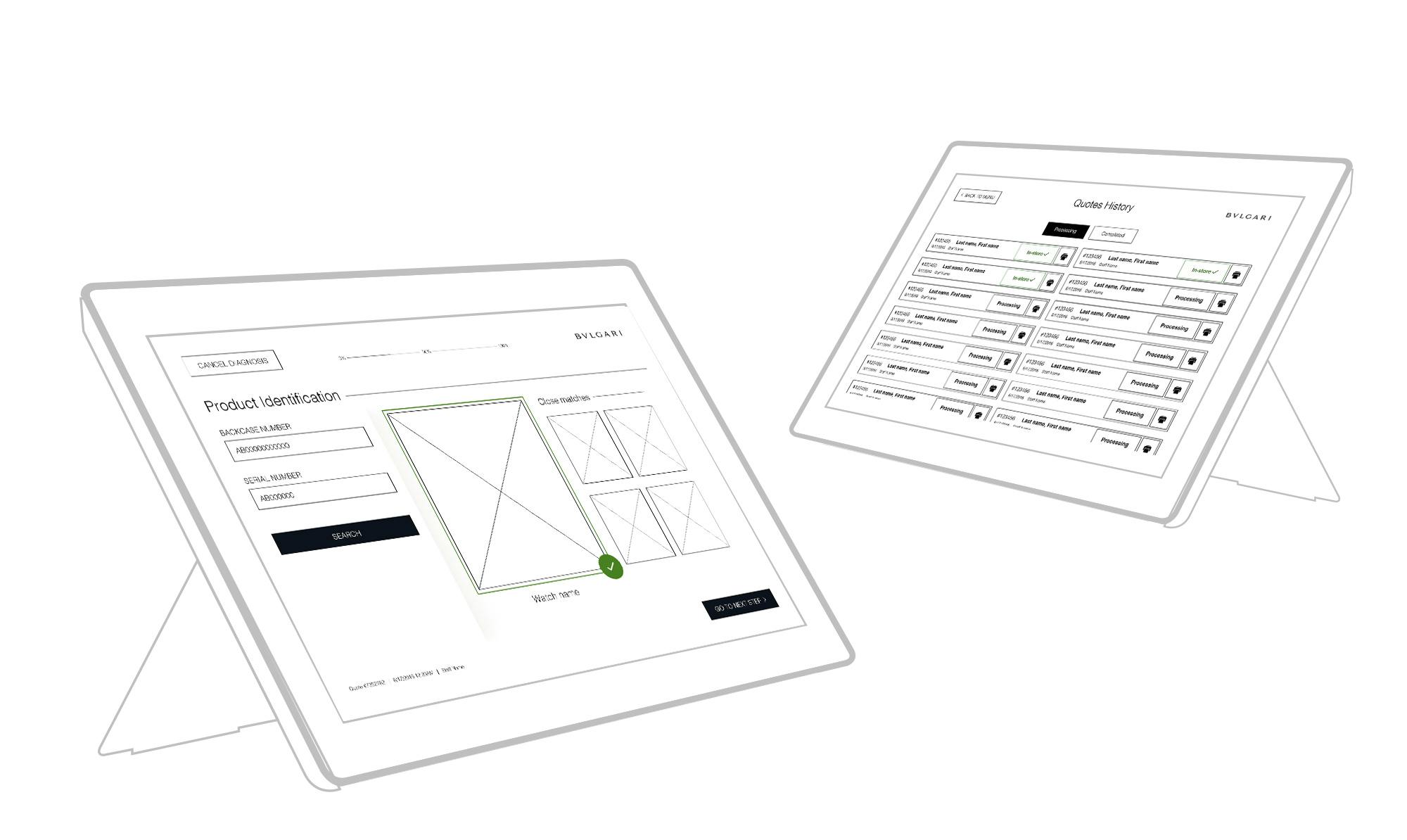
Taking the Frontline’s Pulse
After getting insight from the service centers, we now directed our attention to the stores. Since many of the issues highlighted by service center members centered around the difficulty of identifying the watch model and properly diagnosing it to the right service, we sent a respondent-anonymous survey to Bulgari’s store staff in Japan and China to validate this difficulty and find potential solutions. We also took this opportunity to take a pulse on what store staff thought were the biggest challenges and pain points when providing after-sales.
We learned that in Japan:
- Respondents were well-trained to identify watch models and use the price list correctly and effectively
- Respondents felt the biggest challenge was explaining and justifying the service price to customers without fully understanding the watch’s issue
On the other hand, in China:
- Respondents had difficulties identifying the watch model and determining service price using the price list
- Respondents found it challenging to deal with claims from frustrated customers
There were also commonalities between the two markets:
- Respondents felt that it was extremely difficult to provide service efficiently
- The biggest challenge and source of customer complaints rooted from the fact that respondents couldn’t provide concrete answers regarding the watch’s issue or the exact service price on-the-spot
The survey shed new light on potential issues pressuring store staff when serving after-sales, which both Bulgari and we were previously unaware of.
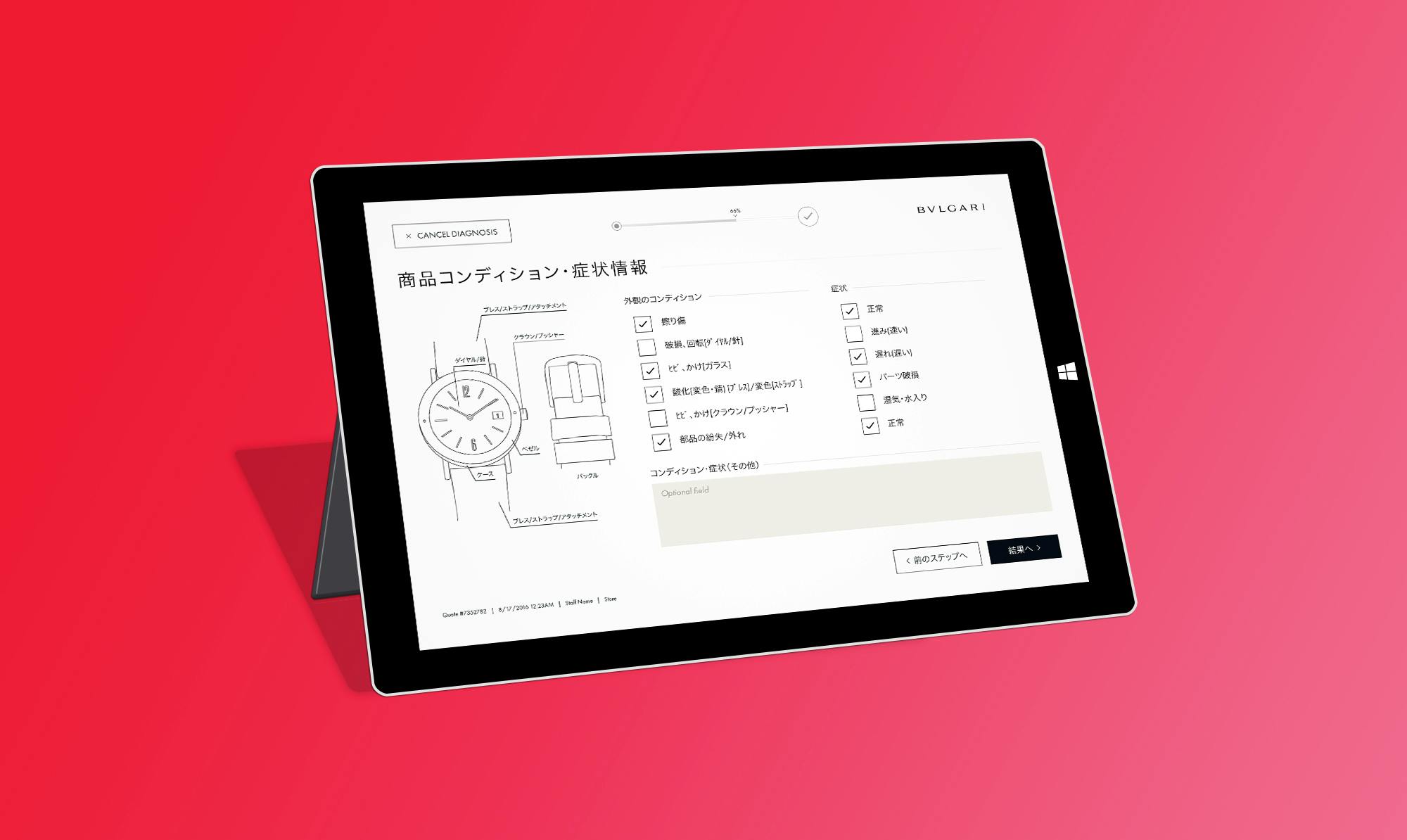
Digging Deeper On-site
We next headed to Bulgari’s stores in both Japan and China, to get a live look into the store-side of the after-sales operation and to see what was really hindering store staff from executing the service well. We conducted interviews with store managers and shadowed store staff at various experience levels in both countries. Our research in the stores highlighted two major problems.
Firstly, as mentioned in the survey, the fact that the store staff could not give definitive answers about the watch’s quote and diagnosis caused a lot of tension with customers who expect this information on-the-spot. Coupled with the difficulty of identifying the watch model and properly using the price list as was the case in China, store staff was put in a very difficult place without having the proper knowledge to serve while facing pressure from customers looking for answers.
Secondly, we came to discover that processing after-sales required many disorganized steps for the store staff, necessitating their proactive intervention in all stages of the cycle. Store staff had four main roles to execute for every after-sales request since the service center never directly contact customers. Staff must file the after-sales request, continue checking for updates from the service center, call the customer to confirm the final quote and contact the client again to return their watch. All steps were tedious to execute because the internal systems used were slow, not localized, and disconnected while lacking visible notifications even when there was an important update like a change in request status. Staff used paper forms with clients to especially overcome the slowness, but it ultimately doubled their workload since they had to input the request later on into the system.

Introducing the Bulgari Wizard
With the information we gathered from our discovery phase, we set out to craft a UX concept in order to solve Bulgari’s after-sales problems, once and for all.
Our main objectives were to:
- Alleviate the responsibility of store staff while empowering them to properly serve customers
- Unify and streamline all steps of the after-sales cycle in one place, while also going paperless
- Organize the steps to better suit interactions taking place with customers at the store
- Provide tools in the language of the users and markets
We especially focused on reducing the amount of work as well as shifting expectations of both customers and the service center away from the store staff. In the existing setup, the store staff is just the “messenger”, bridging the service center, or the ultimate “decision-maker”, with customers. Yet, they face unequivocal pressures from customers, who assume that the store staff in front of them is the “decision-maker” as Bulgari’s representative. Store staff must work under the pressure of managing client expectations without the qualification, while also lacking the proper tools to act speedily in often time-sensitive situations.
We finally came up with the Bulgari Wizard which now bears expectations and responsibility aimed previously at the store staff. Essentially, from the customer’s perspective, the Bulgari Wizard will become both the “decision-maker” and the “messenger”:
- Decision-maker: based on the information about the watch and its symptoms, the wizard will automatically calculate the likelihood of either the basic or complete service to solve the problem at hand and provide a ballpark estimate according to the price list
- Messenger: the wizard will email the customer when the final quote is ready and again when the watch is ready for pick up at the store
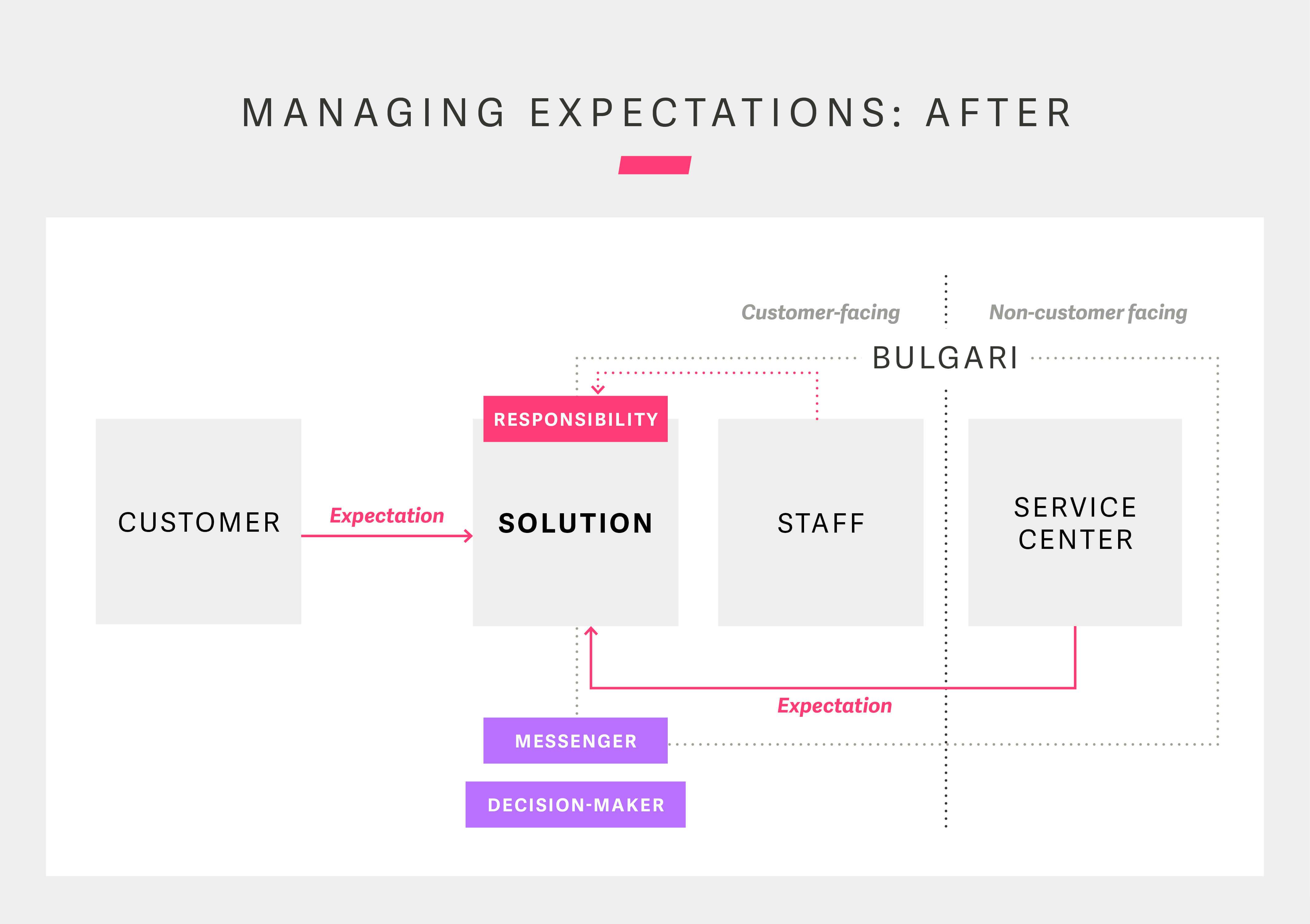
The Wizard in Action
To validate the concept, we created a prototype for the Bulgari Wizard and tested the application with store staff across different markets. With their feedback on the prototype, we continuously tweaked the Wizard to better fit their needs. The result: a powerful after-sales application that helps all Bulgari staff perform at their best.
The final Bulgari Wizard brings together all steps of the after-sales cycle — previously both paper-based and digital, across customers, store staff and service center — into one place for better management and higher efficiency. All processes related to completing an after-sales request, like identifying a watch or entering customer information into the CRM, has also been added into the Wizard to make life easier for store staff at any experience level. Simultaneously, we’ve taken careful measures to manage client expectations in order to elevate the after-sales experience from their perspective, thus the image of the brand too. All of this, while going paperless. Abracadabra!
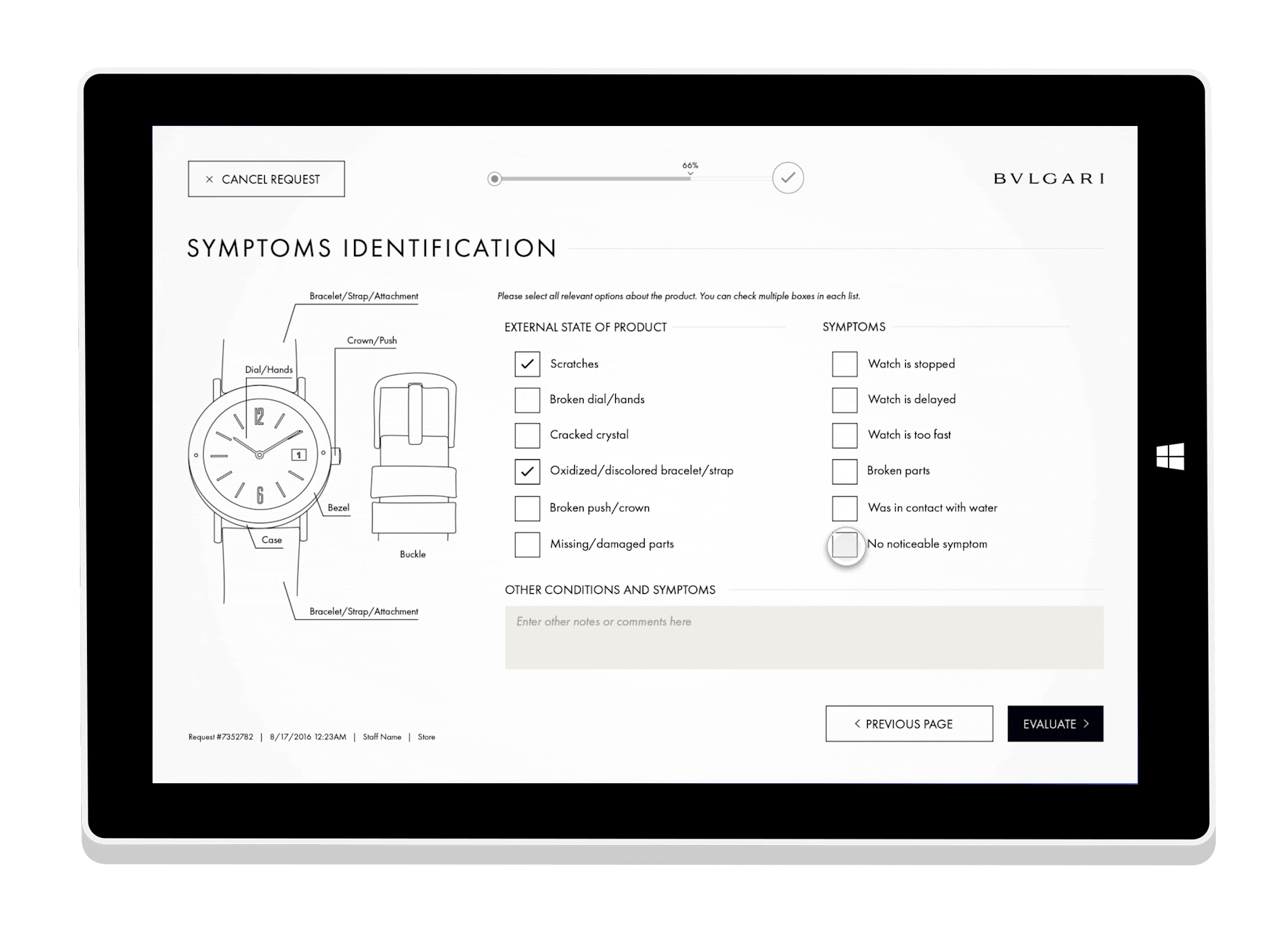
Key Takeaway
Based on our discovery work, concept and UIUX design, the Bulgari Wizard has been developed by Bulgari’s team and integrated directly on their internal platform. The solution has been rolled out across the globe as the brand’s core solution for processing after-sales requests. Thanks to the application, members of Bulgari are now fully empowered to serve customers better while also enjoying less workload in their day-to-day tasks. This project is the perfect example of how retail technology can be leveraged to automate and integrate key business processes to boost performance and productivity.